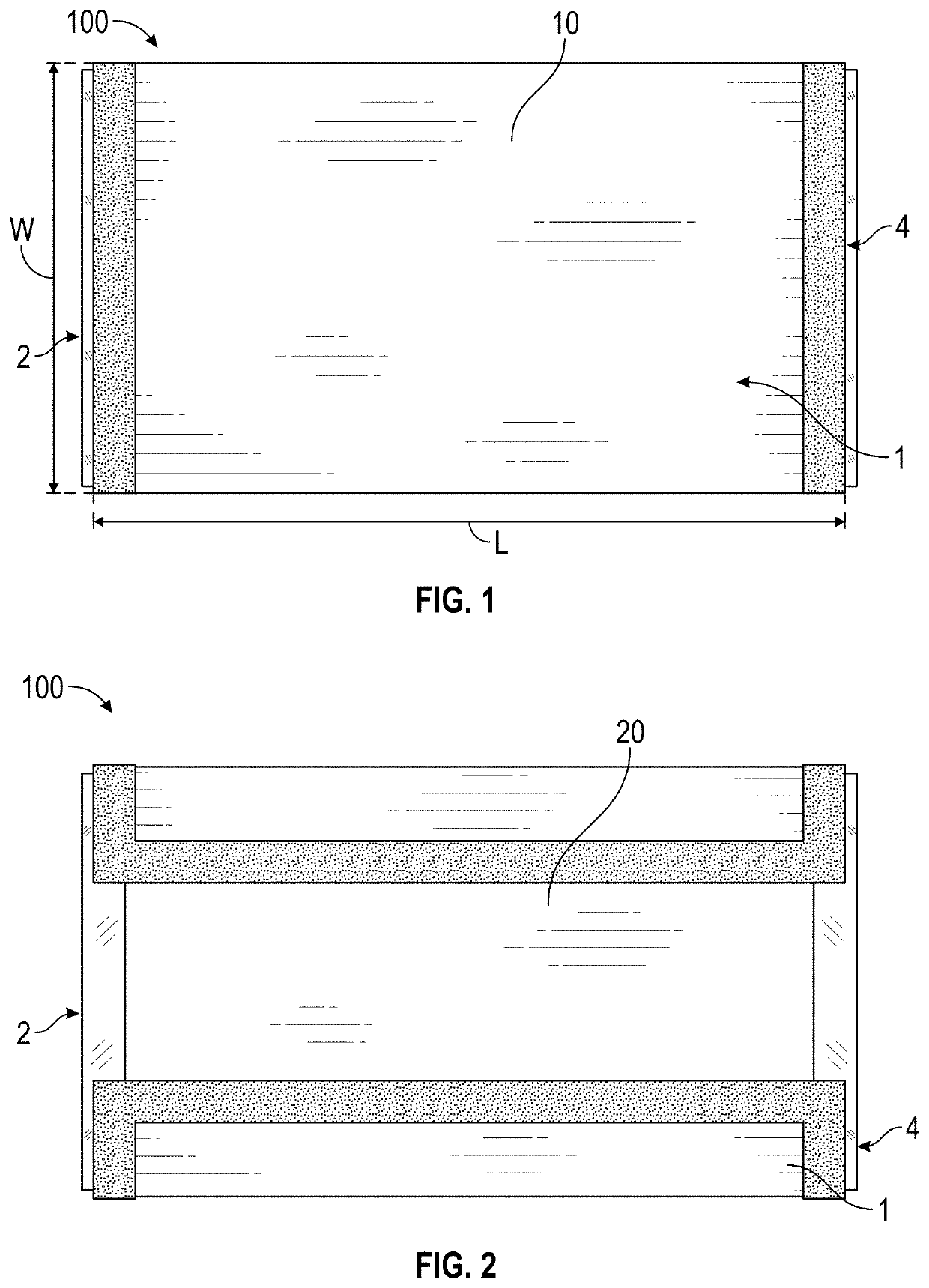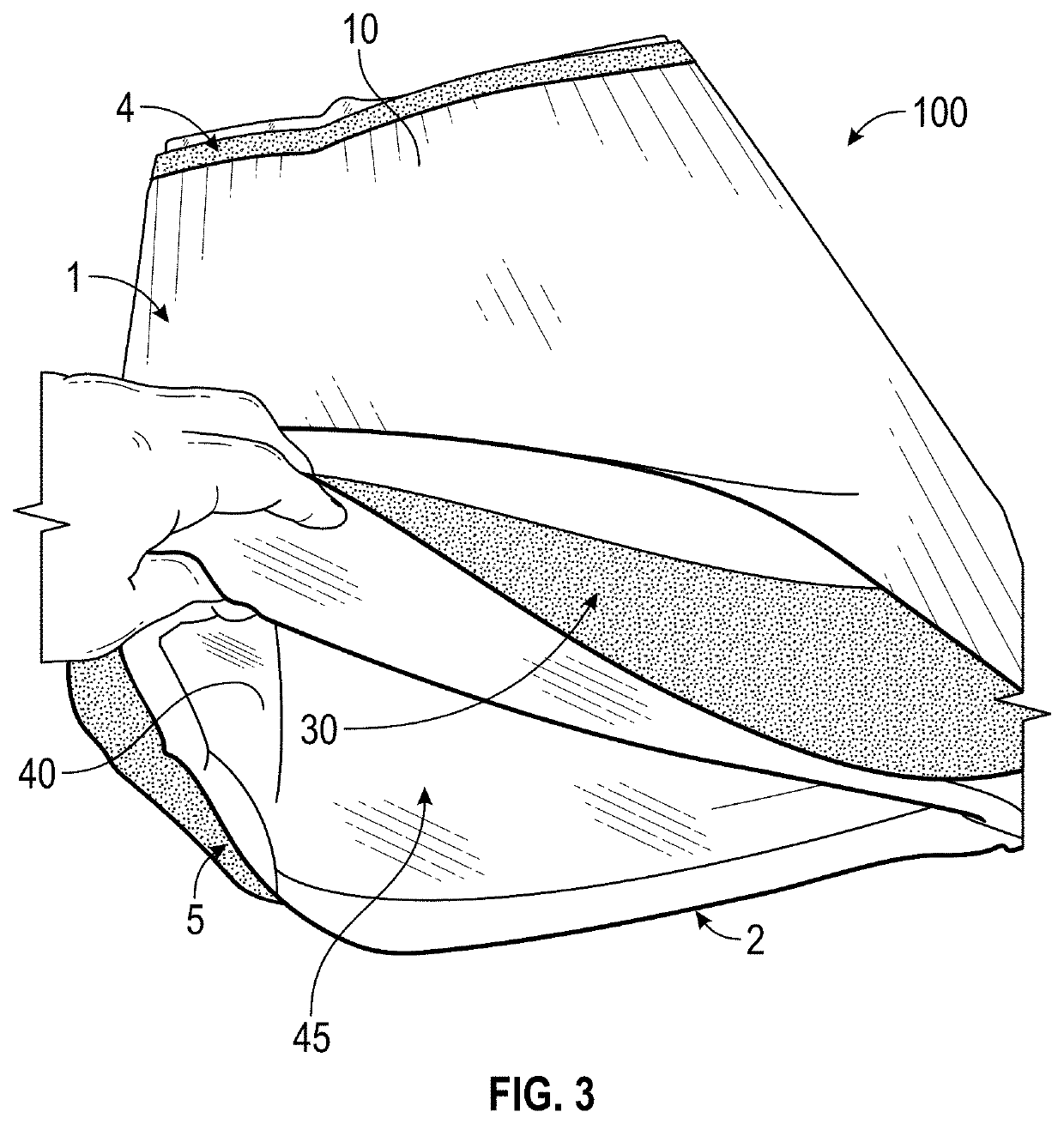Patient positioning device
a positioning device and patient technology, applied in the field of patient positioning devices, can solve the problems of affecting the proper positioning of the patient, affecting the patient's proper positioning, so as to facilitate the patient's placement, reduce the time in properly placing the patent, and improve the patient's comfort. the effect of positioning
- Summary
- Abstract
- Description
- Claims
- Application Information
AI Technical Summary
Benefits of technology
Problems solved by technology
Method used
Image
Examples
Embodiment Construction
[0022]FIGS. 1-7 shows a patient positioning device 100 (hereafter “the positioning device”) that can be utilized to facilitate positioning a patient in a prone position on a medical bed or table. For example, as further discussed below, medical professionals may want to transfer a patient who is lying in a supine (e.g., face up) position on a gurney onto a medical bed or table (e.g., surgical table) and position the patient in a prone (e.g., face down) position. This involves the entire medical team moving the anesthetized patient from the supine (face-up) position on the gurney to a prone (face-down) position on the bolsters in a coordinated movement. The anesthesiologist protects the head, neck and airway. The circulating nurse pushes the patient's body over, while the scrub will manage the lower extremities during the rotation. The surgeon or “catcher” will catch the patient and position them on the bolsters in the prone position.
[0023]The positioning device 100 has an outer slee...
PUM
 Login to View More
Login to View More Abstract
Description
Claims
Application Information
 Login to View More
Login to View More - R&D
- Intellectual Property
- Life Sciences
- Materials
- Tech Scout
- Unparalleled Data Quality
- Higher Quality Content
- 60% Fewer Hallucinations
Browse by: Latest US Patents, China's latest patents, Technical Efficacy Thesaurus, Application Domain, Technology Topic, Popular Technical Reports.
© 2025 PatSnap. All rights reserved.Legal|Privacy policy|Modern Slavery Act Transparency Statement|Sitemap|About US| Contact US: help@patsnap.com



